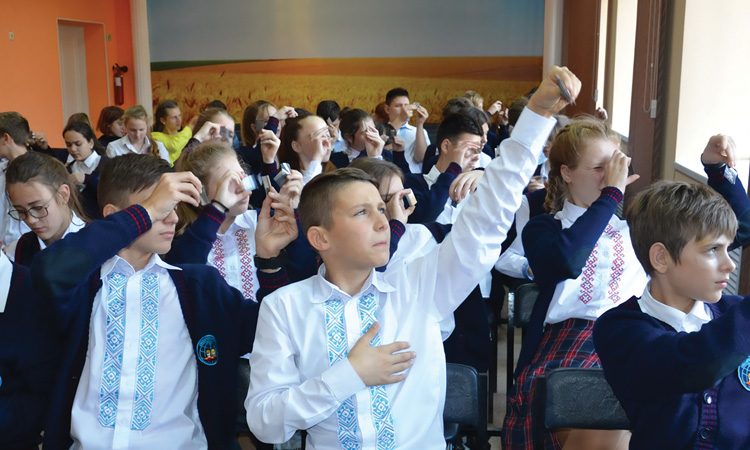Feature
Optics in Ukraine: Glorious Past, Uncertain Future
Invasion and war have disrupted Ukrainian science—and rebuilding it deserves the world’s attention and resources.
 Students in Kharkiv, Ukraine, participating in optics activities during the 2018 International Day of Light. [IRE SPIE and ILTPE (IRE) Optica Student Chapters]
Students in Kharkiv, Ukraine, participating in optics activities during the 2018 International Day of Light. [IRE SPIE and ILTPE (IRE) Optica Student Chapters]
Perhaps every optics research lab has at least one helium-neon laser—a familiar device, and one of the lasers used in manufacturing the electronic and photonic chips used in smartphones, computers, cars and more. What is less known is that before 2022, about half of the world’s semiconductor-grade neon—and about 90% of the neon used in the United States—came from two Ukrainian companies located in Odessa and Mariupol. Further, economic manufacture of neon on such a scale has been possible only because the gas is a byproduct of large-scale steel manufacturing at the latter city’s Azovstal metallurgical plant.
…Log in or become a member to view the full text of this article.
This article may be available for purchase via the search at Optica Publishing Group.
Optica Members get the full text of Optics & Photonics News, plus a variety of other member benefits.
